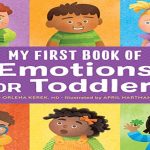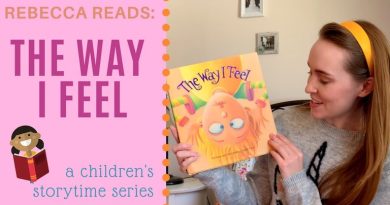10 MustRead Children’s Books That Will Ignite Their Imagination
Having grown up loving books and stories and as a bookworm, I cannot emphasize enough how important it is for children to read. There is something truly magical about getting lost in a well-crafted story, letting your imagination run wild, and becoming captivated by the magical world of words. That’s why I am thrilled to present to you this curated list of 10 must-read children’s books that will ignite your little one’s imagination like never before.
These books are not just mere pages filled with text and illustrations; they are gateways to infinite possibilities, portals to far-off lands, and keys to unlocking the boundless potential of a child’s imagination. From mischievous cats to enchanting magical realms, each story is a treasure trove waiting to be discovered.
In the delightful world of Dr. Seuss’s “The Cat in the Hat,” anything can happen when a mischievous feline arrives at your doorstep. Joining the Pevensie children on their adventures through the mystical realm of Narnia in C.S. Lewis’s iconic “Chronicles of Narnia” series is destined to transport your child to unimaginable heights. And who could forget Lewis Carroll’s whimsical “Alice’s Adventures in Wonderland,” where our young heroine encounters peculiar creatures and experiences that defy all logic?
But the wonders do not stop there. Maurice Sendak’s “Where the Wild Things Are” will whisk your little one away on a wild rumpus that will make their own imagination roar. And E.B. White’s poignant tale, “Charlotte’s Web,” will capture their hearts as they witness the spider Charlotte’s selfless acts to save her newfound friend, Wilbur the pig.
These are just a taste of the adventures waiting to be devoured within the pages of these ten extraordinary children’s books. So let’s embark on a journey together, where the only limit is our own imagination. Get ready to ignite your child’s creativity, expand their horizons, and let their minds soar to unimaginable heights. These books will do more than entertain, they will shape them for a lifetime.
The Cat in the Hat by Dr. Seuss is undoubtedly one of the must-read children’s books that has captivated and ignited the imaginations of generations of young readers. This classic tale follows the adventures of a mischievous cat who visits two children, Sally and her brother, on a rainy day, turning their otherwise boring day into a wild and imaginative adventure. With its vibrant illustrations, catchy rhymes, and playful storytelling, The Cat in the Hat is a beloved book that sparks creativity and imagination in children. If you’re looking to inspire young readers and foster a love for literature, here are some tips and tricks to make the most of this imaginative masterpiece:
1. Engage in interactive reading: As you read The Cat in the Hat aloud, encourage children to participate and join in the fun. Encourage them to repeat catchy phrases or predict what might happen next. This interactive style of reading will not only keep children engaged but also help them develop essential language and cognitive skills.
2. Emphasize the rhymes: The rhythmic and rhyming nature of Dr. Seuss’s writing in The Cat in the Hat makes it an excellent tool for introducing phonemic awareness to young readers. Highlight the rhymes and discuss the sounds they hear. Encourage children to identify rhyming words and even come up with their own rhymes.
3. Explore the illustrations: Dr. Seuss’s illustrations are iconic and play a crucial role in capturing the essence of the story. Take the time to explore the colorful and imaginative illustrations with children, pointing out details and asking them about their favorite characters or scenes. This visual aspect adds depth to the storytelling and helps spark children’s creativity.
4. Extend the story with crafts and activities: After reading The Cat in the Hat, extend the learning experience by engaging children in related crafts and activities. Encourage them to create their own tall and wacky hats using construction paper, paint, and other craft materials. They can also act out scenes from the book or even write their own imaginative sequel.
5. Expand the Dr. Seuss collection: Once children have fallen in love with The Cat in the Hat, introduce them to more of Dr. Seuss’s works. Build a collection of his other classic books, such as Green Eggs Ham, Oh, the Places You’ll Go!, Horton Hears a Who! These stories not only continue to ignite children’s imaginations but also promote reading comprehension language development.
By embracing the creativity and attractiveness of The Cat in the Hat, parents, teachers, and caregivers can cultivate a love for reading, inspire imagination, and ignite a lifelong passion for literature in children. Remember, reading isn’t just about the words on the pages, it’s about the exciting worlds and endless possibilities that unfold within the minds of young readers.
The Chronicles of Narnia by C.S. Lewis – Follow the four Pevensie children as they explore the magical land of Narnia
There are few children’s book series that have captivated readers for generations quite like “The Chronicles of Narnia” by C.S. Lewis. This idea of following the four Pevensie children as they explore the magical land of Narnia is both creative and attractive, appealing to readers of all ages. This must-read children’s book series is filled with adventure, whimsy, and timeless lessons, making it a perfect addition to any child’s reading list. Here are some tips and tricks to enhance the reading experience and engage young readers with this enchanting world.
1. Create a Narnia-inspired reading nook: Transform a cozy corner of the house into a magical reading sanctuary inspired by Narnia. Hang up a wardrobe-themed curtain, add a plush lion or other Narnia-inspired stuffed animals, and set up a comfortable seating area with fluffy pillows and blankets. This dedicated space will transport children into the world of Narnia as they read.
2. Encourage imaginative play: The Chronicles of Narnia is filled with fantastical creatures and magical realms, so encourage children to bring these elements to life through imaginative play. Provide costumes and props for them to act out scenes from the books or stage their own adventures in Narnia. This will not only make reading more interactive but also enhance their understanding and appreciation of the story.
3. Incorporate related activities: Enhance the reading experience by incorporating related activities into the mix. For example, plan a family movie night to watch the film adaptations of the Chronicles of Narnia. Alternatively, organize a Narnia-inspired scavenger hunt where children can search for hidden treasures or clues that represent different aspects of the story.
4. Start a book club or reading group: The Chronicles of Narnia is a book series that can be enjoyed by readers of all ages. Consider starting a book club or reading group where children and adults can come together to discuss the books and their favorite moments. This not only encourages reading but also fosters a sense of community and shared enthusiasm for the series.
5. Explore related educational themes: The Chronicles of Narnia touches upon various themes and ideas that can be explored further in an educational context. For example, research and discussion about mythology, religious allegory, and moral lessons present in the series can deepen children’s understanding and critical thinking skills. Incorporate related projects or assignments that tie into these areas.
6. Encourage journaling or creative writing: The magical land of Narnia offers a plethora of inspiration for young writers. Encourage children to keep a journal where they can write their own adventure stories inspired by Narnia or create fan-fiction featuring their favorite characters. This not only nurtures their creativity but also helps them develop their writing skills.
7. Seek out Narnia-themed events or attractions: Keep an eye out for Narnia-themed events, attractions, or exhibits in your area. These interactive experiences can further immerse children in the world of Narnia, making their reading journey even more memorable and exciting.
By incorporating these tips and tricks, readers of all ages can embark on a magical journey through the enchanting world of Narnia. The Chronicles of Narnia truly deserve their place among must-read children’s books, and the experiences and memories created while diving into this series are sure to last a lifetime.
Alice’s Adventures in Wonderland by Lewis Carroll – Join Alice on her wild journey through Wonderland as she meets strange creatures and has peculiar experiences
Alice’s Adventures in Wonderland by Lewis Carroll is a timeless classic that continues to captivate readers of all ages. This idea revolves around highlighting the importance of must-read children’s books, particularly those that ignite the imagination. By delving into the whimsical world of Wonderland alongside Alice, children are provided with a unique opportunity for imagination development and creative thinking. Here are some tips and tricks on how to incorporate must-read children’s books, like Alice’s Adventures in Wonderland, into a child’s reading repertoire:
1. Introduce a variety of children’s books: Encourage children to explore different genres, themes, and writing styles by offering a diverse selection of must-read children’s books. This will allow them to discover their own preferences and spark their imagination through engaging storytelling.
2. Make reading a fun and interactive experience: Transform the reading process into an exciting adventure by incorporating interactive elements. This can be achieved through dramatic storytelling, using different voices for different characters, or even acting out scenes from the book together.
3. Encourage discussions: After reading a must-read children’s book, engage in thoughtful discussions with children about their favorite parts, characters, or lessons learned. This will stimulate their imagination, encourage critical thinking, and develop their ability to express their thoughts and ideas.
4. Create imaginative activities: Encourage children to extend their reading experience by participating in various imaginative activities related to the book. This could involve creating artwork inspired by the story, writing their own alternative ending, or even constructing a diorama of a significant scene.
5. Provide opportunities for storytelling: Foster creativity in children by encouraging them to retell or reimagine the story in their own words. This could be through oral storytelling, creating puppet shows, or even filming their own mini-movie adaptation.
6. Set aside dedicated reading time: Establish a routine where reading is given priority in a child’s daily schedule. By designating a specific time for reading, children will develop a habit of exploring different must-read children’s books regularly, igniting their imagination and expanding their literary horizons.
7. Visit libraries and bookstores: Take children to libraries and bookstores to expose them to a wide range of children’s literature. Encourage them to browse the shelves, explore new titles, and choose books that they are particularly drawn to. This will cultivate a sense of excitement and adventure surrounding must-read children’s books.
8. Lead by example: Demonstrate your own love for reading by sharing your favorite must-read children’s books with the child. Witnessing the joy and enthusiasm you derive from reading will naturally inspire them to explore the world of literature and ignite their own imagination.
By incorporating these tips and tricks, children can embark on a thrilling journey through the pages of must-read children’s books like Alice’s Adventures in Wonderland. These beloved tales not only provide entertainment but also contribute to the development of imagination, creativity, and a lifelong love for reading.
Where the Wild Things Are by Maurice Sendak – Max embarks on a wild journey when he is sent to bed without his supper
1. Capture the imagination: “Where the Wild Things Are” is a must-read children’s book that effortlessly captures the imagination of young readers. The idea of embarking on a wild journey in the comfort of one’s bedroom appeals to children’s sense of adventure.
2. Emphasize relatability: Max, the main character, is a relatable figure for children as he experiences emotions such as anger defiance. This relatability allows children to connect with the story and see themselves in Max’s shoes.
3. Engage through illustrations: Maurice Sendak’s captivating illustrations play a crucial role in making “Where the Wild Things Are” a must-read. The intricate and imaginative drawings bring the wild things and their enchanting world to life, captivating young readers and drawing them further into the story.
4. Teach valuable life lessons: While “Where the Wild Things Are” is a fantastical tale, it also imparts some valuable life lessons. Children learn the importance of imagination, the consequences of their actions, and the power of love and forgiveness.
5. Encourage verbal development: Reading “Where the Wild Things Are” aloud to children helps in developing their verbal skills. The rhythmic and repetitive text, along with the descriptive language, encourages children to mimic sounds, repeat phrases, and learn new words.
6. Foster emotional intelligence: Must-read children’s books like this one provide opportunities to explore emotions and build emotional intelligence. Max’s journey, from anger to self-reflection and ultimately returning home, allows children to navigate and understand their own feelings.
7. Cultivate creativity: By experiencing Max’s wild adventure, children’s creativity is sparked as they imagine their own wild things and create their unique stories. This, in turn, promotes creative thinking and problem-solving skills.
8. Encourage reading as a habit: Cultivating a love for reading is crucial for children’s development. “Where the Wild Things Are” stands as a must-read due to its ability to captivate young readers, making them eager for more reading experiences.
9. Promote family bonding: Reading this book together can be a fantastic way to create special moments and strengthen the bond between parents and children. Discussing the story and relating it to personal experiences can encourage meaningful conversations.
10. Inspire courage and resilience: Max’s journey teaches children the importance of courage and resilience in the face of challenges. This lesson can motivate children to face their fears, persevere through difficulties, and embrace their own wildness.
“Where the Wild Things Are” perfectly embodies the qualities of a must-read children’s book, combining stunning illustrations, relatable characters, important life lessons, and the ability to ignite young minds.
Matilda by Roald Dahl – Matilda is an extraordinary young girl with special powers who stands up to the mean headmistress of her school
Title: Matilda by Roald Dahl – An Extraordinary Tale of a Courageous Girl and the Battle Against a Cruel Headmistress
Tips and Tricks for Must-Read Children’s Books:
1. Highlight the uniqueness of the main character: Matilda is not just an ordinary girl, but a brilliant and courageous one with special powers. Emphasize her abilities and how she uses them to challenge authority and bring justice.
2. Focus on empowering themes: Matilda is a symbol of resilience and the importance of standing up for what is right. Highlight these themes throughout the book summary or recommendation, emphasizing the positive impact Matilda’s actions have on the lives of others.
3. Spotlight the antagonist: The mean headmistress, Miss Trunchbull, serves as a formidable opponent to Matilda’s power and determination. Talk about the conflict between Matilda and Miss Trunchbull, portraying it as a battle of good versus evil that young readers will be captivated by.
4. Discuss the importance of education: Matilda’s love for books and her thirst for knowledge make her an inspiring role model for young readers. Emphasize how Matilda uses her intellect to navigate different challenges, and how children can find solace and growth through reading.
5. Promote the book’s humor: Roald Dahl’s unique storytelling style includes a touch of humor—sometimes dark, sometimes lighthearted. Encourage readers to embrace the humorous elements that will make them smile and laugh while delving into the story.
6. Recommend other works by the same author: If children enjoy the magical world of Matilda, suggesting other Roald Dahl books will keep them engaged in reading. Works such as “Charlie the Chocolate Factory” “The BFG” maintain the whimsical charm unforgettable characters that Dahl is known for.
7. Highlight the timeless appeal: Matilda has been charming readers for decades, making it a classic children’s book that spans generations. Emphasize that this story will captivate both young readers and adults alike, providing an excellent opportunity for shared family reading experiences.
8. Discuss the impact of the book: Mention the critical acclaim and accolades Matilda has received, such as being named one of the best children’s books of all time. Refer to the positive impact the story has had on readers, making it a must-read for children of all ages.
Remember, when writing about Matilda, focus on the extraordinary protagonist, the battles she faces, the empowering themes, and the impact this beloved book has made on readers.
The Wind in the Willows by Kenneth Grahame – Follow the adventures of four animal friends who live along the riverbank
The idea of revisiting the classic children’s book, “The Wind in the Willows” by Kenneth Grahame, is both creative and attractive. This beloved tale follows the adventures of four animal friends – Mole, Rat, Badger, and Toad – who live along the riverbank. With its timeless themes of friendship, bravery, and the beauty of nature, this must-read children’s book continues to captivate readers of all ages. Here are some tips and tricks to make the most of this enchanting idea:
1. Introduce the characters: Begin by introducing the main characters of the story – Mole, Rat, Badger, and Toad. Each of them has distinct personalities and brings something unique to the story. Discuss their individual traits and how they work together as friends.
2. Explore the setting: “The Wind in the Willows” is set along the riverbank, providing ample opportunities to engage young readers in discussions about the natural world. Encourage children to imagine what it would be like to live alongside a river and the adventures they might have.
3. Discuss the themes: This children’s book explores important themes such as bravery, loyalty, the power of friendship. Guide children in understanding the messages conveyed in the story and encourage them to reflect on how these themes relate to their own lives.
4. Engage in imaginative play: Encourage children to reenact their favorite scenes from the book through imaginative play. Provide them with props and costume pieces to bring the characters to life, fostering creativity and storytelling skills.
5. Organize a riverbank adventure: Plan a field trip to a nearby river, lake, or nature reserve where children can experience the wonders of nature firsthand. Provide opportunities for them to observe wildlife, play by the water, and engage in outdoor activities that connect to the story.
6. Create artwork: Involve children in creative activities inspired by the book. Encourage them to draw or paint scenes from the story, design their own book covers, or even create clay models of the animal characters. Display their artwork in a special exhibition or share it with classmates and parents.
7. Stage a theatrical adaptation: Collaborate with children to create a simple theatrical adaptation of “The Wind in the Willows.” Allow them to assign roles, design costumes, and rehearse scenes. This activity not only fosters teamwork but also helps improve public speaking skills and boosts confidence.
8. Discussion and reflection: After reading the book, engage children in meaningful discussions about their favorite parts, the lessons they learned, and the impact the story had on them. Encourage critical thinking and emotional intelligence by asking open-ended questions and allowing them to express their thoughts and feelings.
“The Wind in the Willows” is a timeless and must-read children’s book that transports readers into a world of adventure and enchantment. By incorporating these tips and tricks, children can fully immerse themselves in the story, develop a love for literature, and cultivate their imagination.
The Secret Garden by Frances Hodgson Burnett – Mary discovers a hidden garden while staying at her Uncle’s estate in England
Must-read children’s books have the power to captivate young minds and transport them to magical worlds. One such enchanting tale is “The Secret Garden” by Frances Hodgson Burnett. This classic novel tells the story of Mary, a young girl who discovers a hidden garden while staying at her Uncle’s estate in England. Here are some tips and tricks to explore and enjoy this wonderful idea:
1. Engage with the characters: “The Secret Garden” introduces readers to a diverse set of characters, each with their own story and struggles. Encourage children to empathize with Mary as she copes with her loneliness and the challenges she encounters in the garden. Additionally, discuss the transformation of Colin, a mysterious and ailing boy, as they witness his growth and newfound joy.
2. Encourage imagination: The hidden garden serves as an imaginative escape for Mary and her newfound companions. Encourage children to visualize the garden, its lush greenery, beautiful flowers, and the sense of tranquility it provides. Encourage them to draw or paint their own interpretation of the secret garden, fostering their creativity.
3. Theme of nature and its healing powers: The garden symbolizes the transformative power of nature, offering solace and healing to Mary, Colin, and even the garden itself. Encourage children to explore and appreciate nature by setting up their own mini-gardens, growing plants, or spending time outdoors, helping them reconnect with the natural world.
4. Discuss the themes of friendship and resilience: As Mary and her friends work together to revive the secret garden, they develop a deep bond and learn valuable lessons about friendship, trust, and perseverance. Stimulate conversations about the importance of loyalty, the strength gained through unity, and the rewards of hard work.
5. Conduct a book club or discussion: Encourage children to share their thoughts and insights about the book by organizing a book club or discussion session. This can be done with friends, family, or even at school. Promote critical thinking and comprehension skills by asking open-ended questions, such as exploring their favorite moments predicting what might happen next in the story.
“The Secret Garden” remains a must-read children’s book, inviting readers of all ages to discover the transformative power of nature, the importance of friendship, and the magic of imagination. Through engaging with this idea, young readers can embark on a journey to a hidden world while fostering their creativity and empathy.
The Wizard of Oz by L. Frank Baum – Dorothy is transported to the magical Land of Oz after a tornado sweeps her away from home
Must-read Children’s Books – Tips and Tricks:
1. Enticing Introduction: Start the story with a captivating description of Dorothy’s ordinary life in Kansas, highlighting her fascination with adventure and hinting at the wondrous events about to unfold.
2. Powerful Protagonist: Describe Dorothy as a relatable and endearing character with a vibrant personality. Emphasize her bravery, compassion, and determination, which will captivate young readers and inspire them to follow Dorothy’s journey.
3. Tornado’s Impact: Create a vivid and suspenseful portrayal of the tornado that transports Dorothy to the Land of Oz. Engage readers by highlighting the chaos and excitement of this pivotal event, leaving them eager to see where Dorothy ends up.
4. Magical Land of Oz: Illustrate the enchanting beauty and unique inhabitants of Oz, such as the Munchkins, talking animals, flying monkeys, Emerald City. Use creative imagery to engage children’s imagination and make Oz a vibrant and memorable setting.
5. Dorothy’s Companions: Introduce the lovable characters Dorothy meets along her journey, including the Scarecrow, Tin Woodman, and Cowardly Lion. Emphasize their distinct qualities and the value they bring to Dorothy’s quest, teaching children about friendship and teamwork.
6. Adventure and Challenges: Highlight the series of obstacles Dorothy and her friends face on their way to reach the Wizard of Oz. Each challenge should present an opportunity for personal growth and discovery, teaching children valuable life lessons.
7. The Wizard of Oz: Create a sense of intrigue around the mysterious Wizard, showcasing his power and wisdom as Dorothy’s ultimate goal. Nurture children’s curiosity and anticipation for the moment she meets the famous Wizard.
8. Encourage Imagination: Throughout the story, leave room for children’s imagination to flourish, allowing them to picture the fantastical elements of Oz in their own unique way. This will enrich their reading experience and foster creativity.
9. Lesson of Home: Weave in the key theme of longing for home and the appreciation of what one already possesses. Reinforce the idea that adventure is exciting, but ultimately, there’s no place like home.
10. Inspirational Conclusion: End the story on a high note, showing how Dorothy’s journey and her return home have transformed her. Reinforce the positive values learned throughout the tale, leaving children with a sense of empowerment and wonder.
Remember, as you write your story, stay true to the spirit and magic of L. Frank Baum’s original masterpiece while adding your own creative flair. This combination will ensure an unforgettable reading experience for children exploring the Land of Oz for the first time.
The Little Prince by Antoine de Saint-Exupéry – An aviator meets a mysterious little prince who teaches him valuable lessons about life
Tips and tricks for reading “The Little Prince” by Antoine de Saint-Exupéry as a must-read children’s book:
1. Introduce the aviator: The aviator is the main character and narrator of the story. Explain to children that he is a pilot who crash-lands in the desert and encounters the little prince. Encourage them to imagine what it would be like to be in the aviator’s shoes.
2. Discuss the little prince’s mysterious nature: The little prince is a curious and thoughtful character. Point out how he comes from a different planet and has unique perspectives on life. Encourage children to make connections with their own experiences and understand that everyone has a unique story to share.
3. Explore the deep philosophical themes: Although a children’s book, “The Little Prince” delves into profound themes like friendship, love, loss, and the importance of human connections. Encourage children to think critically about these themes and discuss important life lessons that can be learned from the little prince’s encounters.
4. Analyze the symbolism in the story: “The Little Prince” is rich in symbolism, with characters like the rose, the fox, and the snake representing various ideas and emotions. Encourage children to actively identify and interpret these symbols, fostering their analytical thinking skills.
5. Encourage imaginative thinking: The book is filled with whimsical illustrations and imaginative scenarios. Encourage children to let their creativity flow and allow their minds to wander as they visualize the settings and characters in the story.
6. Facilitate discussions about the book’s messages: Encourage children to share their interpretations of the book and its messages. Discuss the importance of the little prince’s messages about the value of friendship, personal responsibility, and cherishing our environment.
7. Relate the story to personal experiences: Encourage children to share their own experiences and feelings that parallel those of the characters in the book. This will help them empathize with the little prince and reinforce the story’s lessons.
8. Encourage reading aloud and group discussions: “The Little Prince” is an excellent book for interactive reading sessions. Encourage children to take turns reading aloud, and facilitate group discussions to encourage their engagement and comprehension.
9. Reflect on the illustrations: The book’s illustrations are an integral part of the reading experience. Encourage children to closely examine the illustrations and discuss their impact on understanding the story.
10. Explore adaptations and multimedia resources: Expand children’s experience with “The Little Prince” by exploring other adaptations, such as animated movies graphic novels. This will enhance their overall understanding and allow for different perspectives on the story.
Remember, “The Little Prince” is not just a children’s book – its messages and universal themes resonate with readers of all ages. Embrace the opportunity to explore these important life lessons together and encourage children to apply them in their own lives.
Conclusion
Children’s books are not only a source of entertainment but also a powerful tool to ignite the imagination of young minds. From magical adventures to heartwarming tales, these books have the ability to transport children into a world filled with wonder and endless possibilities. Whether it’s reading about talking animals or exploring far-off lands, these stories provide an escape from reality while stimulating creativity. So, let’s encourage our kids to pick up a book and dive into the enchanting world of literature. After all, the greatest gift we can give them is the love for reading and the power of their own imagination! </>












